The signs of PTSD in children and adolescents can often be difficult to identify. Once an individual identifies the symptoms and side effects of PTSD, the next step in the recovery journey become clear.
Understanding PTSD
Learn about child and adolescent PTSD
Like adults, children and adolescents can come to suffer from posttraumatic stress disorder, or PTSD, following a trauma. Witnessing, directly experiencing, or learning about a trauma can cause this illness to manifest if the adolescent does not have proper support and coping mechanisms in place prior to the traumatic event or events. Additionally, it is important to know that the symptoms of PTSD do not necessarily have to emerge immediately following the trauma. Rather, posttraumatic stress disorder symptoms can become apparent weeks, months, or even years later.
Examples of trauma that can trigger the onset of PTSD symptoms can include, but are certainly not limited to, the following:
- Abandonment
- Car accidents
- Crime
- Man-made disasters
- Natural disasters
- Physical abuse
- Plane crashes
- Sexual abuse
- Sudden loss of a loved one
- Violence
When such trauma or traumas occur, an adolescent may develop posttraumatic stress disorder and then require treatment in order to manage the overwhelming distress that is occurring. With effective care, a youth can learn to process his or her trauma in a healthy manner, develop coping skills for handling stress, and form the confidence needed to overcome the symptoms of this illness.
Statistics
PTSD in children and adolescents statistics
Research shows that adolescent girls are more likely to suffer from posttraumatic stress disorder when compared to adolescent boys. In fact, one study reports that PTSD affects 3% to 15% of girls, and 1% to 6% of boys who have endured a trauma. Lastly, it is believed by experts in the field of mental health that being the victim of abuse is the most common form of trauma that can trigger PTSD symptoms in a teen.
Causes and Risk Factors
Causes and risk factors for PTSD in children and adolescents
Posttraumatic stress disorder is directly influenced by whether or not a child or adolescent has experienced a trauma or not. One cannot be diagnosed with this illness without some sort of precipitating traumatic event, which is why it is important to seek an assessment from a qualified professional so that an appropriate diagnoses can be made. Furthermore, in addition to witnessing, experiencing, or learning about a trauma, there are certain contributing factors that can make a teen more susceptible to grappling with this illness following a trauma. Consider the following:
Environmental: As previously stated, an adolescent is more likely to develop PTSD if coping skills and support are lacking. Other environmental factors that increase a youth’s vulnerability to suffering from this disorder following a trauma include residing in an area in which crime is high, being subjected to violence or abuse on a regular basis, and being placed in multiple foster homes.
Risk Factors of PTSD:
- Lack of adequate social support
- Lack of healthy coping skills
- Ongoing exposure to trauma without time to recuperate
- Residing in an area in which crime and violence are high
Signs and Symptoms
Signs and symptoms of PTSD in children and adolescents
The symptoms of posttraumatic stress disorder that may be displayed by a child or adolescent are very similar to those an adult may display. To know for sure if a teen in your life is struggling with PTSD, an assessment for services should be completed with the following symptoms reported to the assessor if they are present:
PTSD Behavioral symptoms:
- Avoidance of certain people, events, and/or situations
- Diminished participation in once enjoyable activities
- Fighting
- Property destruction and other violent behaviors
- Reckless, risky, or dangerous behaviors
Physical symptoms:
- Disrupted sleep patterns
- Exaggerated startle response
- Hyperarousal
Cognitive symptoms:
- Depersonalization
- Derealization
- Impaired ability to concentrate
- Poor focus
- Recurrent distressing memories
- Vivid and disturbing nightmares
Psychosocial symptoms:
- Emotional withdrawal
- Hypervigilance
- Mood swings
- Persistent negative mood
Effects of PTSD
Effects of PTSD on a child or adolescent
Battling posttraumatic stress disorder can certainly be a disconcerting experience for a teen. Even more troubling are the effects that may transpire the longer this disorder remains constant in an adolescent’s life. Delaying or never seeking effective treatment for PTSD could bring about the following harmful consequences:
- Academic failure
- Decreased productivity at school
- Developing a sense of hopelessness regarding the future
- Difficulty concentrating
- Health problems
- Loss of meaningful relationships
- Onset of other mental health concerns
- Self-harm
- Sleep problems
- Substance abuse
- Suicidal ideations
- Suicide attempts
Co-Occurring Disorders
Child and Adolescent PTSD and co-occurring disorders
Since the symptoms of posttraumatic stress disorder can be severe, it is very possible for a child or teen to eventually suffer from other mental illnesses at the same time. In the event a child or adolescent develops other mental health concerns, or if they are battling certain other disorders prior to the trauma, his or her treatment plan may include interventions that target the symptoms of posttraumatic stress disorder and one or more of the following mental disorders:
- Anxiety disorders
- Bipolar disorder
- Conduct disorder
- Depressive disorders
- Substance use disorder


